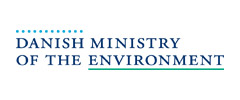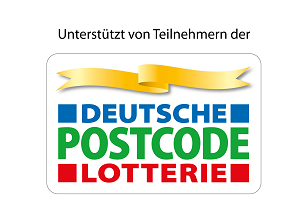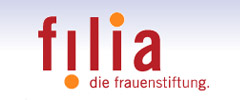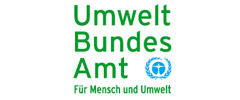Armenia - Healthy Food for Pregnant Women
Improving the health of newborn babies and pregnant women in Armenia; Growing organic Amaranth for the maternity clinic of Yerevan
09.02.2004 | WECF Project
| Countries: | Armenia |
| Donors: | Fred Foundation, The Netherlands; Haëlla Foundation, The Netherlands |
| Partners: | AWHHE |
| Issues: | Chemicals & Health, Biodiversity & Food |
| Duration: | 01/2000 - 08/2004 |

The economic situation in Armenia dramatically worsened since 1990. Currently, dairy products for example are inaccessible to the majority of the population because of their high cost. That is why especially in rural regions vegetables are economically preferable. However, a diet of only vegetables lacks important vitamins such as B12 and D and can only offer very low levels of specific proteins. Furthermore, most vegetables have low levels of essential amino acids (lysine, methionine and so on). Insufficient nutrition has a negative effect on the human immune system, and particularly on developing foetus' and children's immune systems. This negative effect is further enhanced for Armenians who live in the chemically polluted areas near for example the Yerevan Chloroprene plant (Nairit). This leads to increasing levels of disease-rates among children and birth and growth disorders. Especially children and pregnant women need to have access to sufficient amounts of proteins and essential amino acids.
Those severe social and economic conditions have primarily affected Armenian women and children. More than 80% of women with three and more children are currently unemployed. Pregnant women appear among the most vulnerable strata of population. Within the last decade the case of anemia sharply increased. As a result of malnutrition and harmful environmental factors, many children are born with hypothrophy. Pregnant women suffer from frequent miscarriages and other pathologies.
Starting 1990 Armenia encountered a problem of starving children. Prior to the collapse of the Soviet Union the country did not have the problem of toxic dystrophy among the children. This appeared only later as a consequence of malnutrition. According to some mothers, they feed their children only with tea and rice and as a consequence the children develop odeamas and draw back in weight by more than 50% percent, sometimes even more than that. The starvation and malnutrition has mainly affected the children from vulnerable families, i.e. where parents are unemployed for a prolonged period of time. The decreased immunity of children causes severe diarrhea, which promotes the deterioration of the children's health. As a result and in order to fight that problem, the "Nork" Infection hospital of Armenia has established a department for treating those children. In 1998 the death of 12 out of 31 children, who died in the reanimation department of this hospital, was caused by terrible dystrophy. On average, 70-80 patients from the age of 0-2 that are annually accepted to the hospital with the above-mentioned diagnosis. And even this shocking statistic does not reflect the reality, it only shows the existence of the problem. This is the tip of the iceberg. The main problem and the real number of children in need is hidden, as so many of them do not have the access to doctors, health facilities, financial resources, transportation, and finally necessary information on opportunities to be treated.
However, this department does not solve the whole problem. The hospital itself is not self-sufficient. It does not have resources to either show a substantial treatment of the children, nor to feed them. Second, even after some children receive more or less sufficient treatment, they return to their families which are still unable to maintain their daily nutrition. That is why it has become a very common phenomenon that in 40% of the cases, the same children recently under treatment, were admitted to the hospital with the same problems.
The majority of the population especially in the country-side is unable to buy meat or dairy products and they substitute their protein diet with vegetables. Besides, even the small amounts of proteins that they consume, have low levels of amino acids (lysine, methionine). The whole range of products that contain important and irreplaceable amino-acids are inaccessible to the majority of population due to the high cost. The average salary of an Armenian is about $15-20 per month. This is in sharp contrast to the minimal consumer basket which is growing at a fast rate, starting from $50.
Project Description
In the view of the excising situation we decided to help Armenian
women to become self-sustainable and at the same time improve the
health of their children. In this project we propose a plan of
developing ways of sustainability. Our project proposal is aimed at the
improvement of the general health status of pregnant women and children
and attaining their sustainability and self-sufficiency.
We decided to come closer to solving this problem by starting the organic cultivation of amaranth, a plant which was used for centuries by American Indians and which contain proteins, iron, calcium and lysine which are vital for conquering the problems of malnutrition. Amaranth grows well in Armenia and is found everywhere. Amaranth is a perfect crop to cultivate there and it has unique characteristics. However, the Armenians have so far considered it as an uneatable, bad weed.
Our organization, Armenian Women for Health and Healthy Environment, in collaboration with Women of Europe for Common Future (WECF) have the capability to successfully carry out this project, due to our experience with health, environment and agricultural projects and knowledge of the situation in Armenia.
Amaranth: indigenous and rich in proteins and minerals
Amaranth is a plant used for centuries by the Indians of America as a vegetable and high-grade food. In the last decades numerous research was carried out (in the US, Russia and other countries) looking at ways to help solve the nutrition problem in poor countries. That is how Amaranth was discovered as a 'miracle' plant. Amaranth is extremely rich in proteins, particularly lysine, as well as methionine. Amaranth contains in higher levels than other plants carbohydrates , calcium, iron, dietary fibers and vitamins. It improves the ratio of amino acids, which can be compared with fish, meat or poultry. Approximately 48% of the Amaranth grain are a very valuable starch. The NAS (National Academy of Sciences of USA) recommends its use because of these aspects. Amaranth can be used in a mix with more traditional grains such as rice and wheat. What is important to this project is that Amaranth is indigenous to Armenia and grows perfectly in the Armenian climate. So far however, Armenians have thought of the plant as a bad weed, not a high-grade food crop.
- Class / Grain Amaranth Wheat Corn Rice Oats per 100 grams
- Protein 19g 12.8g 9.4g 5.6g 15.8g
- Fiber (crude) 5.6g 2.3g 3g .3g 3g
- Fat (crude) 6g 1.7g 4.7g .6g 6.9g
- Carbohydrates 6g 71g 74g 79.4g 66g
- Calcium 250mg 29.4mg 7mg 9mg 4mg
- Iron 15mg 4mg 2.7mg 4.4mg 5mg
As shown above, Amaranth scores high in protein value when compared to other grains. When Amaranth is combined with other grains, the protein value score approaches the ideal amino acid reference pattern established in 1973 by the FAO/WHO of the United Nations.
*Source: National Research Council, 1984.
Amaranth
We hope, that in result of our project, in Armenia a new and cheap kind of grain will enter into common use which will help to solve one of the population's food problems.
Currently 3 hectares of land have been cultivated during a first season with Amaranth. The harvest was good despite the severe lack of rain which the entire region suffered from. Several different types of Amaranth were grown to test which are most suitable to climate and soil. The Amaranth harvest is now waiting in storage until the approval from the Ministry of Health is obtained for its commercialization and use in hospitals.
Contact
Elena Manvelian, AWHHE Avan-Arindg 1/14-7, 375022 Yerevan, Armenia, Tel: +3742 626620, Email: danelik@freenet.am
Related News
Meet the Winners of the Gender Just Climate Solutions Award at COP24
On the 70th anniversary of the Universal Declaration of Human Rights, we awarded Gender Just Climate Solutions Winners at the climate negotiations in Katowice, Poland
11.12.2018
Invitation: Gender Just Climate Solutions Award 2018
10 December, COP24 Katowice
04.12.2018
Getting to the Future We Want
4-7 November, Brussels: European Environmental Bureau’s (EEB) Annual Conference
12.11.2018
GoodFood4All
WECF and partners all over Europe start GoodFood4All Campaign
06.11.2018
#Ruralwomen: join our Women2030 campaign!
15.10.2018
Lack of trustworth information is a barrier to chemicals & product related decision-making
8-9 October, Geneva: short report of the meeting of the Aarhus Convention’s task force on public participation in decision-making
12.10.2018
Congratulations Sascha!
Named thirty-third most influential sustainability fighter in the Netherlands
08.10.2018
The Netherlands in the next gear - Adopt an SDG Live!
WECF and Building Change organised the event “The Netherlands in the next gear – Adopt an SDG live” on 27 September in the Koorenhuis in The Hague
02.10.2018
Human Biomonitoring for Europe
Vienna, 26 September: stakeholder forum
28.09.2018











































